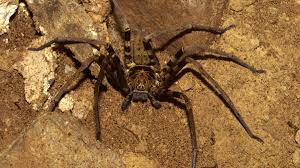Among the many wonders of the animal kingdom, some creatures stand out due to their unique physical traits. One such creature, often discussed in wildlife circles and recently highlighted in the New York Times, is a creature prized for its long legs. These long legs not only set the animal apart visually but also play a crucial role in its survival, behavior, and interactions within its environment. Whether it’s for speed, hunting, or navigation, long legs offer significant advantages in the wild.
The Significance of Long Legs in the Animal Kingdom
Adaptation and Evolution
In the world of nature, an animal’s physical traits are key to its survival. Long legs are often associated with specific adaptations that help a creature thrive in its habitat. For many species, long legs are linked to speed and agility, allowing them to escape predators or chase down prey. In other cases, long legs help animals traverse challenging terrains, such as marshes, forests, or open plains.
For example, some species of birds, like herons and flamingos, have long legs that enable them to wade through deep waters without submerging their bodies. This feature not only allows them to spot and catch fish but also provides them with a better vantage point to observe their surroundings. Similarly, animals such as the giraffe, with its extraordinarily long legs and neck, have adapted to life on the savanna, where these traits help them reach high branches for food and keep an eye out for predators.
Role in Movement and Hunting
Long legs also enhance an animal’s ability to move efficiently across large distances or challenging landscapes. In species like cheetahs, the length and structure of their legs are optimized for speed, enabling them to sprint at remarkable speeds when hunting prey. Their long limbs allow for longer strides and greater acceleration, making them one of the fastest land animals on Earth.
Other creatures, such as certain types of spiders or insects, use their long legs for agility, allowing them to move swiftly and with precision. These legs enable them to navigate their environments efficiently, whether they’re chasing prey or avoiding threats.
Which Creatures Are Known for Their Long Legs?
Birds and Mammals
Birds are among the most commonly recognized creatures with long legs. The stork and crane, for instance, are famous for their elegant, elongated legs, which they use for wading in water while hunting for fish or insects. These birds are prized for their grace and are often associated with wetlands and natural reserves.
In the mammal world, giraffes stand out as the tallest land animals, with long legs that contribute to their towering height. Their legs, combined with their long necks, make them well-suited to grazing on treetops that other herbivores cannot reach. The antelope and gazelle are other examples of mammals with long legs that help them run at high speeds to escape predators in open plains and savannas.
Insects and Arachnids
While mammals and birds may be the first to come to mind when thinking of long legs, certain insects and arachnids also fit this description. The daddy longlegs, for example, is a type of arachnid known for its incredibly long, delicate legs relative to its small body. Despite its fragile appearance, the daddy longlegs uses its legs to move quickly across various surfaces, including plants and rocks.
Another example is the stick insect, which uses its long, slender legs to blend into its surroundings, resembling twigs or branches. This camouflage helps it evade predators while moving stealthily through vegetation.
Importance in the Ecosystem
Balancing Nature
Creatures with long legs often play crucial roles in their ecosystems. For instance, wading birds like flamingos help maintain healthy water environments by consuming large quantities of algae, small fish, and insects. Their feeding habits help control these populations, keeping the ecosystem balanced. Giraffes, on the other hand, contribute to the health of their ecosystems by grazing on tall trees, which allows sunlight to reach shorter plants and promotes biodiversity.
Animals with long legs, whether they are predators or prey, help shape the ecosystems in which they live. Their physical traits, behaviors, and movements influence the survival of other species, contributing to the overall health and balance of their habitats.
